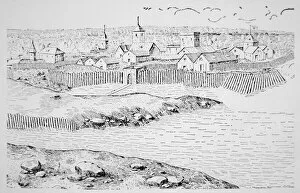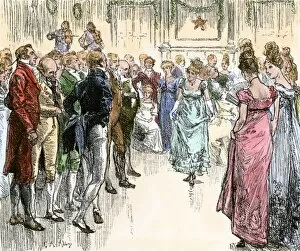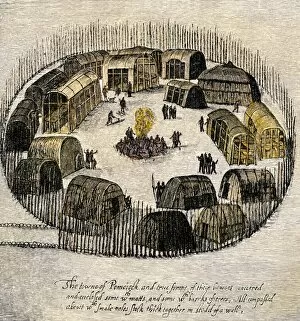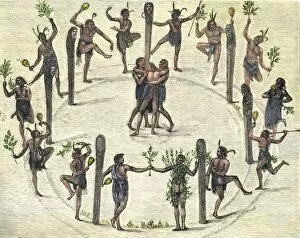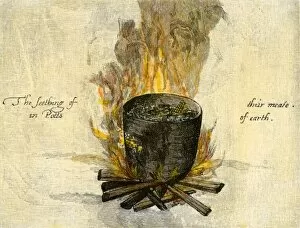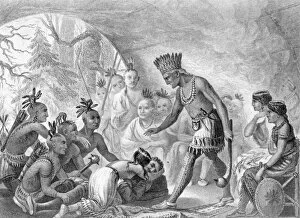Virginia Colony Collection
The Virginia Colony, established in Jamestown, Virginia in 1607 (engraving), holds a significant place in American history
All Professionally Made to Order for Quick Shipping
The Virginia Colony, established in Jamestown, Virginia in 1607 (engraving), holds a significant place in American history. This colony faced numerous challenges and triumphs throughout its existence. Jamestown, Virginia, 1622 (engraving) depicts the aftermath of the Powhatan Indian attack on the English settlers. Despite this setback, the colonists persevered and continued to build their community. La Princesse Indienne (engraving) showcases the interactions between Native Americans and colonial Virginians. These encounters were often complex and influenced both cultures. Colonial Virginians at a plantation ball (NATI2A-00151) highlights the social life of wealthy landowners during this time period. These gatherings provided an opportunity for networking and establishing social hierarchies within society. Shaman of Native Americans of colonial Virginia (NATI2A-00086) sheds light on the spiritual practices of indigenous tribes living in proximity to European settlements. The clash between traditional beliefs and Christianity was a recurring theme during this era. Cookpot of Virginia natives, 1500s (EXPL2A-00161) offers insight into the daily lives of Native Americans before European arrival. It reminds us that these lands were inhabited long before colonization began. Despite conflicts with native populations, there were instances where cooperation occurred as well. NATI2A-00116 captures moments when mutual understanding was achieved through trade or diplomacy. NATI2A-00062 portrays Colonial Virginians engaging in agricultural activities such as farming or livestock rearing. Agriculture played a crucial role in sustaining early settlements like Jamestown. NATI2A-00112 represents women's contributions to colonial society by showcasing their involvement in domestic tasks such as cooking or textile production. Women played vital roles within households and communities alike. The images collectively paint a picture of life within the Virginia Colony - from its founding struggles to the complex relationships between settlers and Native Americans.



